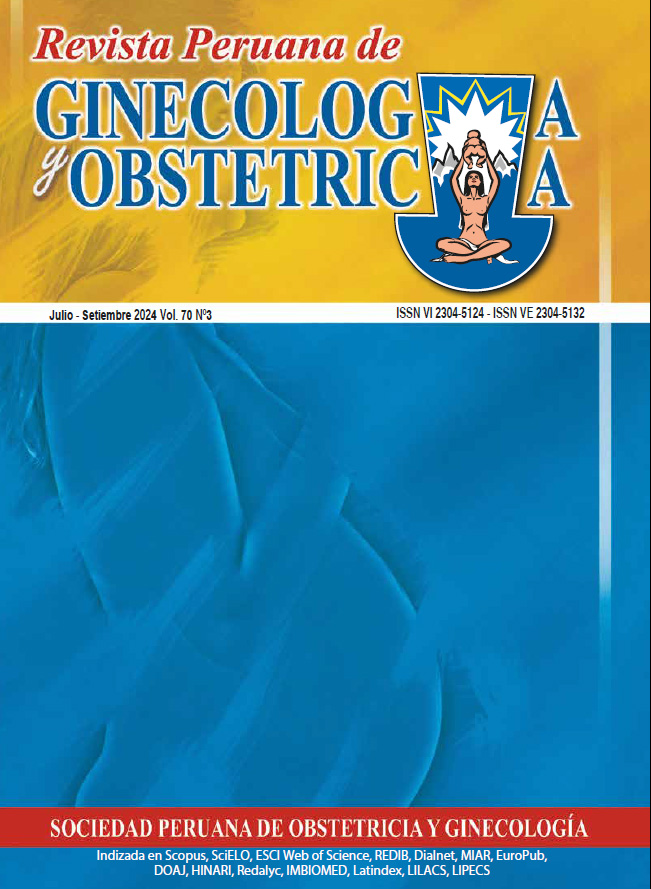Evaluation of new ultrasound parameters in the diagnosis of placenta accreta spectrum in placenta previa
DOI:
https://doi.org/10.31403/rpgo.v70i2663Keywords:
Placenta accreta, Placenta previa, hyperechogenicity, Chorion, Ultrasonography, DopplerAbstract
Objective: To determine placenta previa accreta using ultrasound anatomical features
and Doppler flowmetry profile. Methodology: Descriptive, prospective, cohort,
longitudinal study. The European Working Group on Abnormally Invasive Placenta
(EW-AIP) classification was used. Institution: Hospital Nacional del Sur de EsSalud,
Arequipa, Peru. Participants: Pregnant women at high obstetric risk with diagnosis of
placenta previa, 20-40 weeks of gestation with diverse parity and history of cesarean
section. Results: Out of 90 patients with a diagnosis of placenta previa in 2022 and
2023, 12 patients with suspected accretism were selected by ultrasound assessment
and Doppler flowmetry. Maternal age, number of gestations, history of uterine
curettage, previous cesarean section and greater number of cesarean sections were
statistically significant, with the second and third cesarean section presenting 21.1
and 9.6 times more risk of accretism, respectively. Ultrasonographic criteria were
loss of the clear zone, irregular oval placental lacunae, disruption of the bladder
wall, placental heterogenicity and hyperechogenicity, hyperechogenic and irregular
chorionic plaque, hypervasculature of the bladder and subplacental wall, nutritional
vessels and hypervascularized placental lacunae. The peak flow velocity of 52.3 cm/
sec was highly significant for placental accreta vs. 26.0 mL/sec in placentas previa
with no signs of accreta. Doppler flow velocity above 50 cm/sec presented higher
risk of placenta accreta and decreased maternal survival. Conclusion: In the study,
the ultrasound findings of a) placental heterogenicity and hyperechogenicity, b)
hyperechogenic and irregular chorionic plaque, and c) Doppler flowmetry quantified
with the maximum velocity were useful in predicting placental accretency.
Downloads
Downloads
Published
How to Cite
Issue
Section
License
Copyright (c) 2024 Enrique A. Jaramillo Saavedra, Gonzalo Arturo Medina Bueno, Helen Jaramillo Gutiérrez, Alberto Cáceres Huambo, Deyne Maribel Ticona Ramos

This work is licensed under a Creative Commons Attribution 4.0 International License.
Esta revista provee acceso libre inmediato a su contenido bajo el principio de que hacer disponible gratuitamente la investigación al publico, lo cual fomenta un mayor intercambio de conocimiento global.















